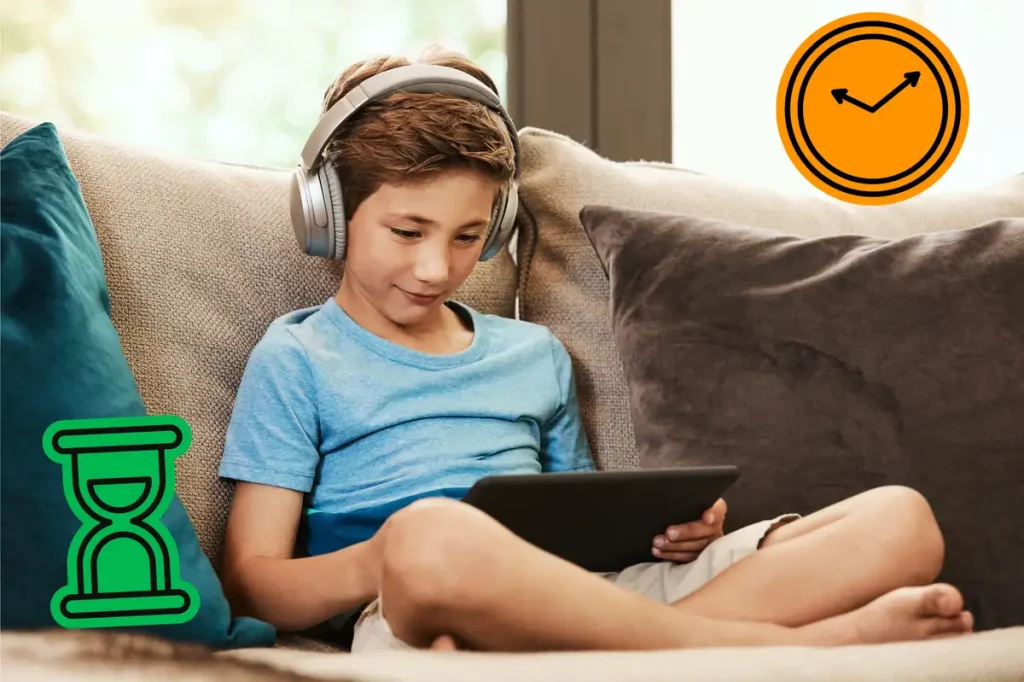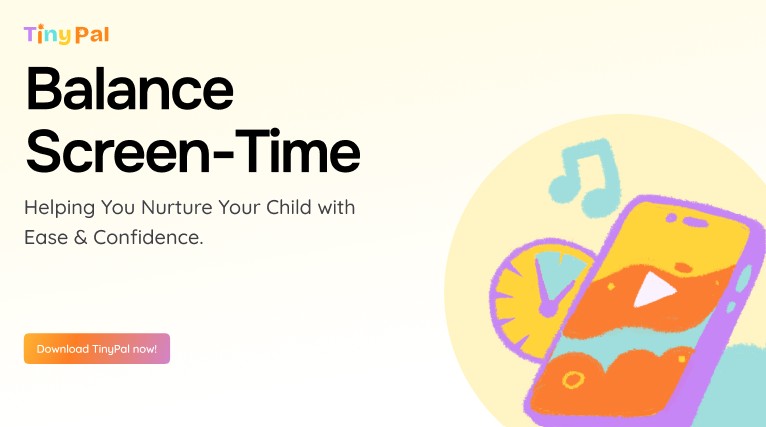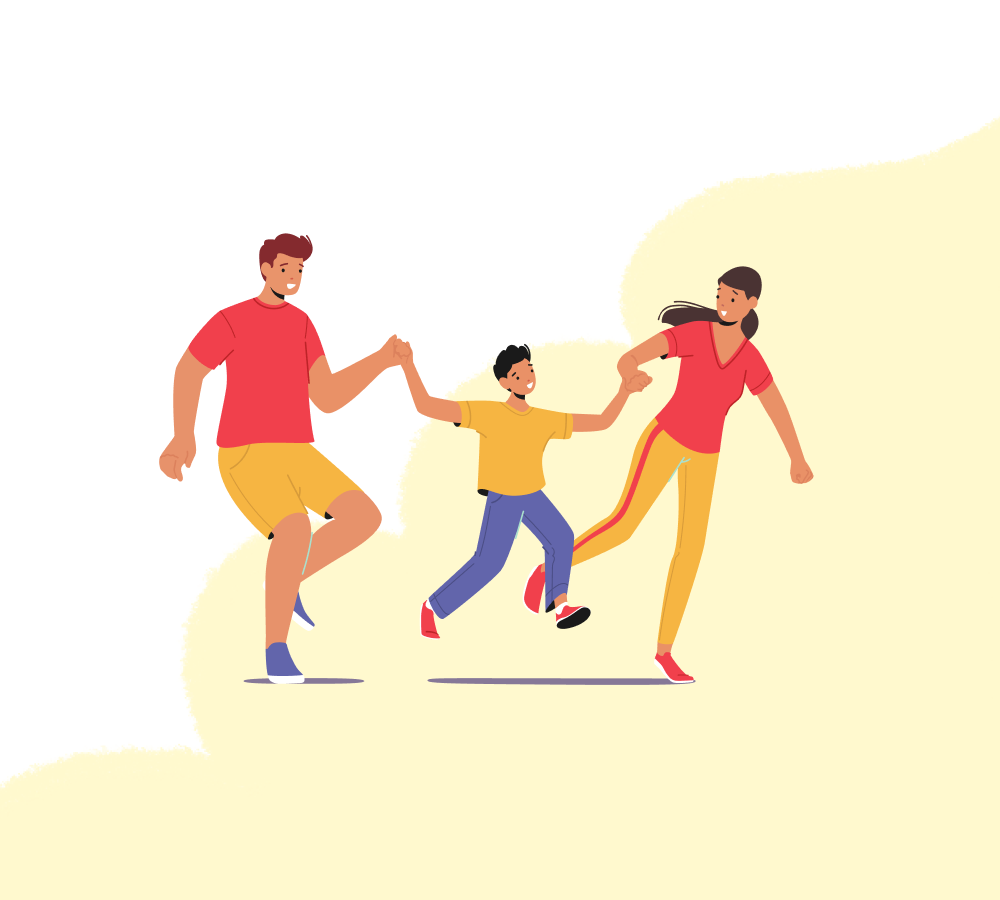Screen Time Recommendations by Age Chart (2025 Global Parenting Guide)
Balance the screen, not the child — the smarter way to raise digital natives.
Why Screen Time Needs a Rethink in 2025
Screens are no longer optional — they’re part of how kids learn, connect, and express themselves.
But unstructured exposure is quietly reshaping attention spans, emotions, and sleep patterns worldwide.
Every parent asks:
“How much screen time is healthy for my child’s age?”
That’s exactly what this guide answers — backed by global health data, pediatric psychology, and TinyPal’s AI parenting intelligence, which adapts these recommendations to your family’s lifestyle, location, and routine.

Table of Contents
Screen Time Recommendations by Age Chart (Global 2025 Update)
The following chart combines insights from the World Health Organization (WHO), American Academy of Pediatrics (AAP), and TinyPal’s global behavioral dataset (80+ countries).
| Age Group | Recommended Daily Screen Time | Type of Use | TinyPal Smart Guidance |
|---|---|---|---|
| 0–2 years | Avoid (except video calls) | Real-world sensory play only | Suggests offline bonding prompts |
| 2–5 years | Up to 1 hour | Co-viewed, educational, supervised | Generates daily digital-to-physical play ratio |
| 6–10 years | 1–1.5 hours | Learning + entertainment | AI creates “family balance schedule” |
| 11–13 years | 2 hours | Education + guided exploration | Introduces “emotional tech reflection” |
| 14–18 years | 2–3 hours | Balanced learning, social + creation | Suggests “intentional use plans” |
| Adults (18+) | Self-regulated | Productivity + connection | Sends reminders for mindful device detox |
📊 Insight: TinyPal’s AI continuously adapts this chart for cultural, seasonal, and lifestyle variables — for example, increasing outdoor play prompts in summer or reflective habits during exam season.
Why Age-Specific Screen Time Matters
Children’s brains develop rapidly through touch, motion, and interaction — not passive consumption.
When exposure exceeds the recommended threshold:
- Cognitive growth slows
- Emotional reactivity increases
- Attention span and empathy decline
Each age group has different neural needs — so the solution isn’t “one-size-fits-all,” it’s personalized digital rhythm.
That’s exactly what TinyPal’s Smart AI Planner builds automatically for families.

TinyPal’s Science Behind the Chart
TinyPal’s AI model combines three knowledge layers:
- WHO & AAP Pediatric Data:
Establishes universal baselines. - Neuroscience-Behavioral Inputs:
Tracks parent-reported behaviors to understand emotional correlation with screen time. - GEO-Aware Personalization:
Adjusts recommendations based on country, culture, and climate (e.g., rainy regions get indoor sensory play prompts).
The result?
A living, learning system that helps parents turn screen time into growth time.
Deep Dive: Screen Time Effects by Age
Ages 0–2: Zero Screens, Maximum Connection
Babies learn through imitation and sensory play.
Screen visuals overstimulate the optic cortex without building motor or emotional links.
👶 Focus on touch, voice, and physical exploration.
TinyPal Tip: Use its “Offline Learning Mode” to get daily bonding task suggestions — like mimic games or texture play.
Ages 2–5: Guided Co-Viewing Phase
At this stage, learning apps and cartoons can help — but only with parental narration.
The parent’s voice bridges digital content and comprehension.
TinyPal Feature: Co-View Assistant — helps parents choose calm-paced, language-building shows and schedules 15-minute breaks.
Ages 6–10: Foundation of Digital Discipline
Kids start associating screens with fun. Without guidance, it turns addictive.
Balance fun apps with creativity and offline hobbies.
TinyPal Feature: AI “Routine Builder” auto-adjusts breaks after 30 minutes of use, suggesting active play ideas.
Ages 11–13: Emotional and Social Awareness
Preteens experience comparison stress from social platforms.
Instead of bans, teach mindful engagement.
TinyPal Feature: “Emotion Mirror” module identifies content that triggers stress and helps parents open healthy conversations.
Ages 14–18: Intentional Tech Use
Teens need self-regulation. Discuss why limits exist, not just how long screens can stay on.
Encourage creative, purpose-driven usage (music, coding, art).
TinyPal Feature: “Mindful Creation Tracker” rewards productive screen use, shifting focus from consumption to contribution.

Adults: Model What You Teach
Kids imitate parents.
If you doom-scroll during dinner, they’ll do the same.
TinyPal Tip: Activate “Parent Reflection Mode” — AI gives gentle reminders when your device activity pattern spikes during family hours.
Practical Tips for Parents
✅ Follow the chart, but stay flexible.
✅ Replace restriction with communication.
✅ Use co-viewing for bonding.
✅ Introduce device-free meals and bedtime routines.
✅ Use TinyPal’s adaptive suggestions daily for balance.
FAQs — Screen Time Recommendations by Age Chart
- What is the ideal screen time for children?
WHO suggests: under 2 years — none, 2–5 — 1 hour, 6–10 — 1.5 hours, teens — 2–3 hours. - How can I manage screen time for my 7-year-old?
Set consistent limits and mix screen with physical play. TinyPal offers AI schedules for 6–10 years. - Is educational screen time safe?
Yes, when guided. TinyPal helps you identify balanced, learning-oriented content. - How to reduce my child’s screen addiction?
Replace idle time with offline bonding, nature exposure, and creative projects. - Does screen time affect sleep?
Yes, blue light delays melatonin; avoid screens 1 hour before bedtime. - Can screen time improve learning?
Interactive, age-appropriate apps can, but passive watching reduces focus. - How much screen time for teens is healthy?
2–3 hours daily, with active discussions about digital purpose. - Is zero screen time realistic for toddlers?
Video calls are fine — but avoid shows and apps. Focus on sensory play. - How can TinyPal help with screen time balance?
TinyPal analyzes routines and generates adaptive, age-based digital plans. - Does TinyPal monitor children?
No, it guides parents through empathy-based coaching and behavioral insights. - Can TinyPal’s AI personalize by country?
Yes, it localizes routines based on cultural and climatic factors. - Are these guidelines the same worldwide?
TinyPal integrates WHO data but adjusts for regional lifestyle differences. - What’s the difference between screen time control and guidance?
Control restricts; guidance educates. TinyPal focuses on awareness. - How does TinyPal help parents stay consistent?
Through reminders, visual dashboards, and AI behavioral nudges. - Can TinyPal replace other parental control apps?
Yes — it’s a conscious parenting platform designed to evolve beyond restrictions.
Conclusion
Screen time isn’t the enemy — unconscious use is.
By following this age-based chart and leveraging TinyPal’s intelligent guidance, you’ll raise children who thrive digitally and emotionally.
TinyPal doesn’t block screens — it balances them.
Because the best parental control is self-control — built together, guided by AI, powered by love.
🔗 Download TinyPal — The AI Parenting App That Teaches Balance

